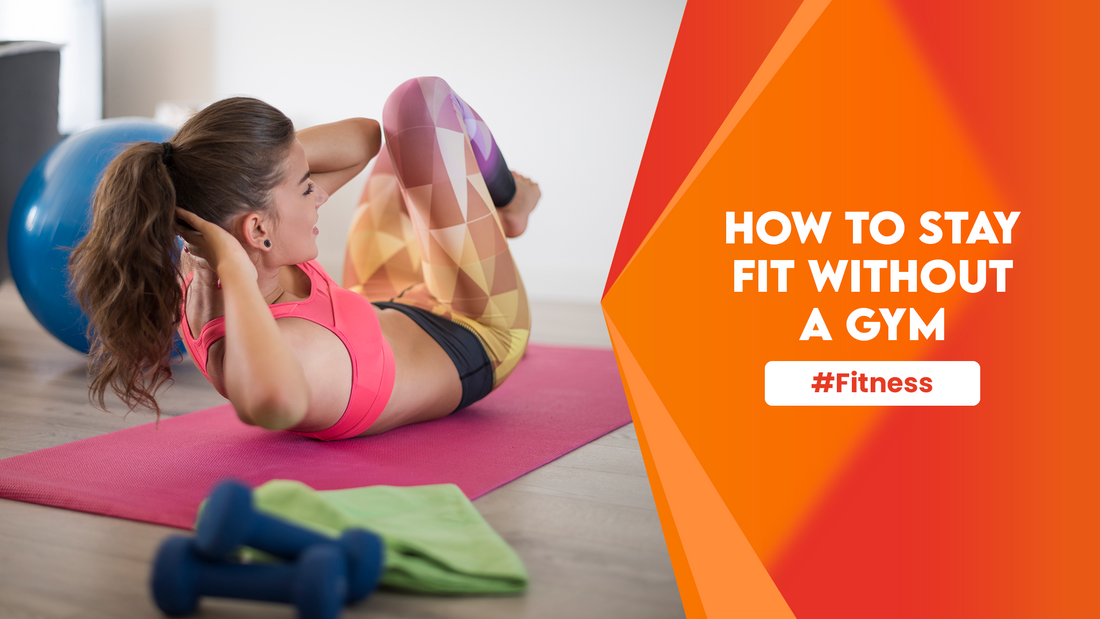
How To Stay Fit Without A Gym
Share
We obviously believe that exercise is something that you can do on your own, any time, anywhere. That doesn’t mean however that gyms are redundant or that a set of exercises is all you need in order to maintain your fitness.
For a start we understand that motivation is key to learning to exercise every day. We understand that other obstacles may arise as the lack of leisure time to workout or the physical discomfort involved when we start to exercise in the first instance.

But none of the obstacles already mentioned are the true reason we don’t normally choose to exercise from home. A 2015 study that focused on the psychological needs that kept athletes in the gym found that intrinsic satisfaction, a sense of acceptance and a deeper sense of identity were better indicators for keeping them motivated over time than anything else. Psychologists call this self-determination theory and point to its importance in establishing habits that help us become better versions of ourselves.
This also gives us the perfect recipe to apply to training from home when we can’t go to the gym:
Ten Steps To A Home-Based Fitness Regime
Create a routine.
Instead of trying to contort your day to fit some training in it, find a time that best fits your exercise routine and stick with it day after day. It only takes a few repetitions like that to make it part of your habitual daily routine and you’ve got yourself a training plan that works for you.

Start slow.
Ambition is great as long as the initial plans that get you there are grounded in reality. Start with things you are able to do and build from there on a gradual basis. After only a while you will notice you are doing far more than when you started training.

Make it interesting.
Training alone, at home, can quickly become boring and boredom, even in small quantities, accumulates and kills your motivation. Use role-playing game exercises you can find in internet or imagine yourself as a hero preparing for an adventure or a physical challenge. You can even listen to music or a podcast you like.

Get some support.
In a traditional gym environment you have support from those around you, qualified gym instructors and trainers. Working at home, you’re usually alone. Questions thay may have remain unanswered as they build up undermine your confidence and then impacts on your ability to continue with your home-based exercise. Join any web community about fitness, find or get together a group of friends with whom to share doubts, difficulties and achievements.

The company you keep plays a central role to how you behave when things get tough for you and having people around you who can help lift your spirits and support you is crucial to maintaining your momentum.
Keep yourself accountable.
When we train on our own it becomes really easy to forget where we're at. This is where keeping good records of our workouts can help us reach our targets faster. A 2006 study of the effects of journal keeping on motivation and critical thinking showed that decision making improves if we keep our self accountable by maintaining good records of our progress.

Mix it up.
Variety is not just the spice of life, it is also key to helping you maintain your fitness goals. Internet and Youtube is full of differentes workouts to help you from growing stale in what you do. Having the option to change the exercises you do, as you wish, helps you maintain your motivation and also, stops your body from habituating to exercises which means your physical progress is also better and faster.

Take photos.
When we exercise progress is incremental. Because it happens slowly, day after day, it often becomes hard for us to notice the changes that occur. This is why pictures are so important. By ‘freezing’ our physical state each day they become an irrefutable record of our progress. It also helps our mental health.

Set goals.
Goal setting, literally, changes the way the brain works in ways that help us achieve those goals.Provided that goal-setting is realistic, achievable and provides a solid sense of progression that feeds on motivation, the setting of goals is part of the personal strategies employed to maintain focus when working out alone.
Challenge yourself.
Small physical or mental challenges repeated often, help our brain deal with the strain of change and the challenge of training alone. They also and go a long way towards developing grit and resilience.

Help others.
Find ways to help others train also, either by using technology to connect with them or finding other ways that will also help them find ways to maintain their fitness. Helping others, either through encouragement and advice or through explanations and practical mentoring helps us develop a better-balanced inner world with greater capacity for emotional regulation. In other words, through the process of helping others get fit and grow emotionally and psychologically we also help ourselves do the same.

Summary
You don’t have to implement all ten steps to successfully train at home. But if you do, you will find that your home-training experience is far from being a lonely one and, arguably, much more rewarding than just going to the gym. Most important of all, you will find yourself developing mental, emotional and psychological resources you just didn’t think you had.












